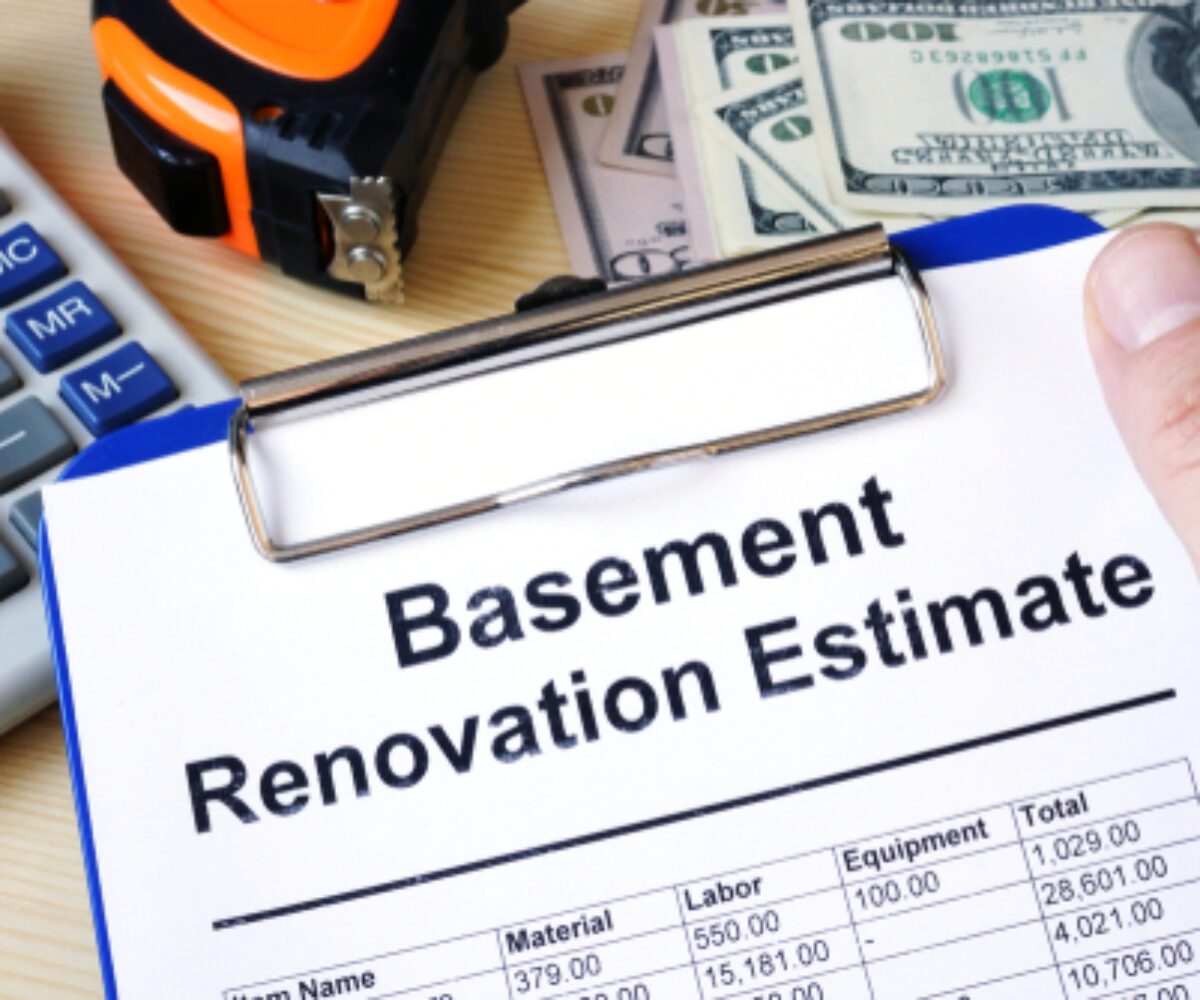How Much Does it Cost to Finish a Basement in Denver?
The Value of a Finished Basement
A basement project has the potential of a 70% return on investment, according to reports by Remodeling Magazine, making it one of the best ways to add value to your home. In addition to added equity, it also improves the functionality of your home, as it creates a new space to use as anything from an entertainment space to a guest bedroom, a workshop, or whatever your imagine conceives.
Costs to Consider
Finishing a basement incurs a range of costs, not all of which may be outwardly apparent at the onset. Though every basement is unique, there are some rudimentary elements common to all basement finishes that should be considered when establishing your budget.
- Permits
The cost of a building permit varies considerably from municipality to municipality. Architectural plans for the project are submitted to the governing city’s building department and go through an approval process prior to permit issuance. Sometimes changes to the plan are required to meet city-specific building codes. If tempted to proceed with your project without going through the permitting process, DON’T. Building without the required permit can result in fines, and most certainly in legal hassles down the road when it’s time to sell your home. - Framing
Framing costs typically include both labor and material, and vary depending upon the size and complexity of the project. For example, framing a basement with only a large open rec room and adjoining bathroom would be less costly than would a plan including multiple rooms, a wet bar, closets, and built-in shelving. Another consideration affecting framing is the location of HVAC trunk-lines, which may have to be accommodated by framing soffits or ceiling drops around them. - Drywall
Having an experienced drywall craftsman on your job goes a long way towards creating a professional outcome for your finish project. You want the finished basement to look as if it was part of your existing home all along, and not a sloppy afterthought. This is accomplished, in part, by matching the drywall finish to that existing in the home, creating a seamless transition. Drywall costs can be impacted by obvious factors such as the type of texture selected (knock-down is typically standard and a skip-trowel finish considered to be an upgrade) as well as some aspects which may surprise you, such as the size of the space to be finished; a smaller area–500 sq. or less–is often more expensive to finish than a larger one, due to hassles inherent in managing a tightly-spaced work site or the demand for workers on larger jobs. Another consideration is the delivery of large drywall sheets into the basement. A walk-out basement is a plus, but drywall can often be ferried into the home through a temporarily removed basement window, avoiding the mess of traipsing through the main entrance of the home and leaving a dusty drywall trail behind. - Insulation
When planning a basement finish it’s natural to think of expenses only in terms of that which can be seen in the final product, such as drywall, interior finishes and flooring. One of the less visible components, insulation, can add greatly to the comfort and enjoyment of your space. Municipal codes determine the amount and type of insulation that is required to be installed in a finished space to meet energy efficiency codes, but you may wish to consider leaving room in the budget for sound-dampening insulation in the ceiling of the home theater, or in the walls of the mechanical or laundry room. It’s a less expensive upgrade that’s easy to include in the basement finish process and can prove beneficial in the long-term. - HVAC
Another important but unseen component of a basement finish is the heating, ventilation, and cooling system. If done properly the venting will be run down (inside) the walls of the basement so that heat and air conditioning are not entering basement rooms from the ceiling. Home comfort upgrades you may wish to consider adding at the time of a basement finish include the addition of another HVAC zone or a larger or additional hot water heater. - Electrical
As with insulation, much of the electrical component in a basement finish is governed by building codes and as such should be part of any base bid. Often, the installation of an additional electrical sub-panel is required to handle the increased load of new finished space. You’ll want to consider the intended uses of your new basement; for instance, you may need to include a 220V power source for a large piece of exercise equipment or a washer/dryer hook-up, or dedicated circuit for a fridge or microwave in a wet bar. Low-volt wiring may be something you elect to include for a surround-sound theater system or additional data ports for internet and TV access. Electrical upgrades are typically added at a homeowner walk-through after the completion of framing, when the walls are still open. Expenses for electrical upgrades can add up quickly, so it’s best to prioritize your electrical needs and wants up-front to help the project stay on budget. - Ceilings
A traditional drywall-finished ceiling should be standard with any basement finish, and would be included in the costs of framing and drywall. Plan to spend considerably more if you wish to include features such as beams, a tray ceiling, or a coffered one. - Floors and Finishes
Flooring and interior finishes are aspects of a basement finish over which you have the greatest control of cost and budget. Perhaps base-level finishes will suit your purposes well while controlling costs or, on the other hand, you may want to budget in splurges for upscale bathroom tile and plumbing fixtures. When selecting flooring keep in mind that some types work better than others in a basement application, and some will require floor leveling prior to installation, which adds to the overall cost. Knowing up-front which finishes come standard with the bid you receive will help in creating your budget. - Egress Windows
A not-as-fun expense is the inclusion of egress windows (if not already present), which may be required by code if a room is to be used as a bedroom. You may, however, also elect to add egress windows to bring additional daylight into the basement.
Cost per Square Foot
Steer clear of companies who give you a general one-size-fits-all bid for a basement finish. The unique characteristics of each basement in the Denver metro area require a pre-bid site visit to adequately assess job considerations and quote realistic pricing.

